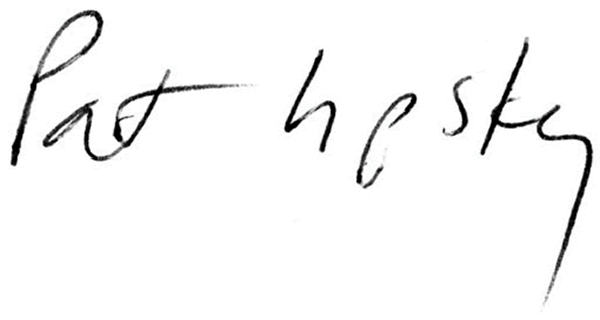Pat Lipsky at Elizabeth Harris Gallery
Pat Lipsky is not merely the dean of contemporary geometric abstraction but its dominatrix. She offers color and shape relationships within structures of unrelenting rigidity, and it is not always clear whether the formal disciplines to which she subjects the eye are for her own satisfaction or the viewer’s. A steely, seemingly dispassionate composure contains seething reserves of aesthetic emotion.
It would be fanciful, however, to detect a range of emotion in work: shifts in mood from canvas to canvas are as nuanced as the differences in hue between closely related colors in a single composition. The nine paintings in her fourth solo exhibition with Elizabeth Harris adhere to a strict serial pattern: a pair of thicker columns flank and sandwich three thinner ones, with each column comprising unequal horizontal halves. Color-wise, there are are subtly differentiated blacks and reds — the blacks restricted to the thinner columns, the reds free to wander — and shades of blue and gray in more pronounced contrast.
The designs are almost, but significantly not quite, symmetrical. Reductive as her mode may appear, Ms. Lipsky — who began her career in the late 1960’s — is no minimalist: More significant than its strictures and exclusions is her painting’s overt, if hard-edged, sensuality. Despite the eggshell, matted finish, her affectless paint delivery makes each bar in the grid pulsate with its own obsessively-sought color and context.
{embed=“painting/_embed” entry_id=“21”}
The compositions are placed on a ground that forms a framing border: Some are white, others gray. This device inevitably brings to mind Joseph Albers and his prim “Homage to the Square” series.
As with Albers, and with Mondrian — as ever the touchstone for all serious geometric abstract painters — Ms. Lipsky’s work demands a leap of faith on the viewer’s part. Her formally austere strategy aims to give the viewer a pure color experience. But the actual sensations engendered are divorced from the normal life of the eye, taking the viewer to a conceptual place that’s about color rather than of it.
Even within Ms. Lipsky’s stringent limitations, the recalcitrant eye can never dispel the possibilities of representation. The columns, with their pulsating reds pushing perceptually backwards and forwards, beg to be read also in terms of up and down, like pistons or syringes filling with liquid. The blues, spied around corners in up-down or down-up-down sequences, insinuate themselves into sea and sky. They read like organ pipes filling with sound, or the display of a digital equalizer recording its fluctuations.
The more the eye is beaten into form for form’s sake, the more it wanders willfully along the paths of association, fantasy, analogy.
